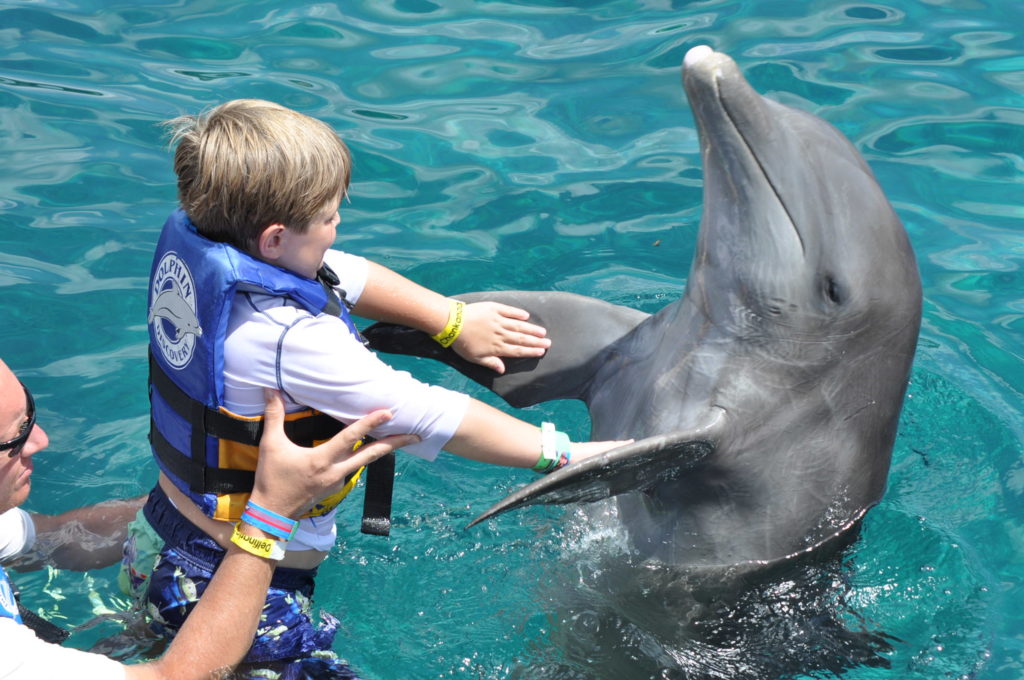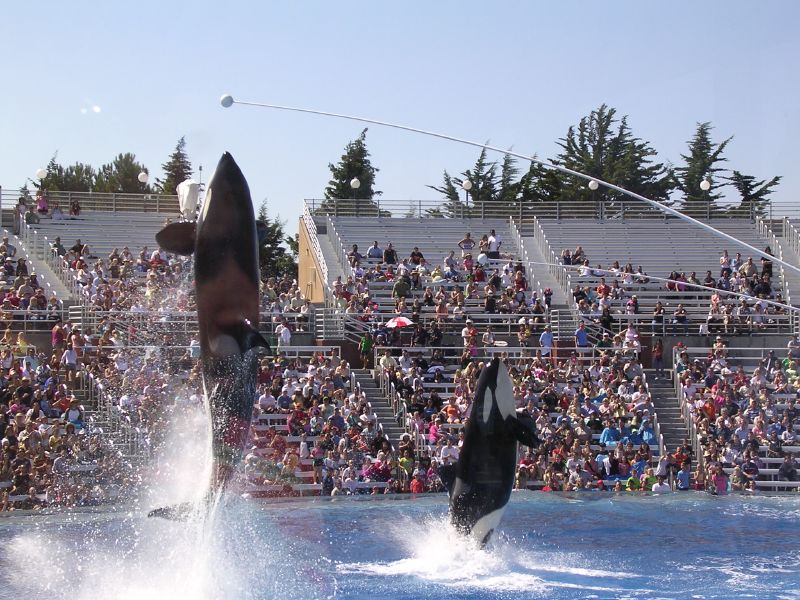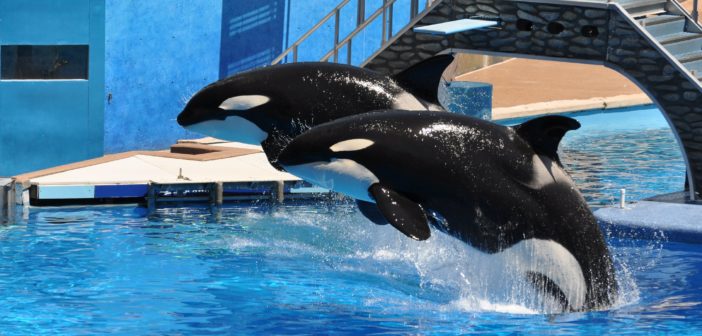Capturing and confining dolphins and orcas in concrete pools is killing them—physically and psychologically. Please don’t support captive animal entertainment.
Both captive orcas and dolphins die prematurely from living in restrictive captivity. They experience deep psychological trauma and neurosis from boredom, stress and anxiety. Every day they are denied the company of their families and are prevented from expressing their natural instincts and behaviors. They are also denied the ability to swim up to 100 miles a day as they normally would. In captivity, they live diminished lives where they must perform tricks, entertain people against their will, or withstand being touched and handled by people nonstop for hours.
Swimming with dolphins
Humans are clearly in love with dolphins. And what’s not to love? But if you love them and respect them, don’t swim with them or support these businesses. Dolphinariums and programs offering “swimming with the dolphins” have grown in popularity in recent years. Today, they can be found all over the Caribbean including the Bahamas, Jamaica, Dominican Republic, Grand Cayman and Cancun. There are new businesses popping up in other locations as well.
These dolphins have no choice but to inhabit small and shallow concrete swimming pools, where they are forced to interact and be touched by humans constantly every day, and cannot escape. Because of the constant stress, human activity, and inability to escape, dolphins have bitten children due to their stress and fear. These businesses endanger both dolphins and the public, and are often in violation of federal laws and animal welfare laws.

Where dolphinariums and marine parks get dolphins
In order for dolphinariums to get dolphins, they must buy them from hunters who catch them in the wild. The dolphin hunts are extremely traumatic and egregiously harmful. The hunts tear apart dolphin families and social groups, and cause injury and often death from entanglement and suffocation. Once corralled by boats, the dolphins are chased into nets, rounded up and captured, then transported by plane to their destination. Mortality rates are high during capture and transport, and those who survive often develop stress-related conditions.
Because female dolphins are considered more trainable, most captive dolphins are females. Dolphin populations have been falling in recent years, and capturing more dolphins from the wild is depleting an already at-risk population of mammals, especially by removing the females who would ordinarily produce offspring
Animal welfare violations and lack of protections
Marine parks like Miami Seaquarium, Six Flags in Vallejo, CA, SeaWorld in San Diego and Orlando, and Marineland in Canada, have incurred countless violations of the Animal Welfare Act. In the U.S., the Animal Welfare Act (AWA) provides specific standards of care, but often they are not enforced, as there are a small number of inspectors responsible for all of the facilities in the U.S. There is a need for much greater enforcement of current standards and the passage of new laws aimed at protecting captive marine mammals. In many countries today, lax regulations have led to filthy, inadequate tanks, sick orcas and dolphins, a high injury rate, and countless premature deaths.
No matter how good the aquarium or marine park is—or how big—there is no size big enough to confine such intelligent, complex wild animals, who are accustomed to swimming up to 100 miles a day with their families, as free autonomous beings. Many marine biologists and ethicists believe that orcas should not be kept in captivity at all. By patronizing marine parks, aquarium shows, and dolphinariums, we only encourage their capture and confinement, and subjugation by humans for the rest of their lives.

Some positive news
In 2016, SeaWorld made the decision to end their orca breeding program, making the current 30 whales at SeaWorld the last generation of captive orcas. In addition, they committed to phase out their orca shows in San Diego and focus instead on the rescue and rehabilitation of marine mammals in crisis. Also in 2016, the National Aquarium in Baltimore, Maryland, announced that it would retire its eight captive dolphins to a sea sanctuary. But countries like Russia, Cuba and Japan are still capturing wild dolphins and whales to sell to entertainment venues and marine parks around the world.
What you can do to help
- Don’t attend or visit marine mammal parks or aquarium shows. These businesses are profit-driven and are using and abusing animals for profit. The only way to stop the growth and development of these businesses is to stop the demand. Tell friends and family not to support cetacean captivity as well.
- Ask for bans. Support efforts to ban the cruel hunts in the ocean and ban the facilities around the world holding dolphins and whales in captivity.
- Encourage marine parks to become spaces for rehabilitating injured mammals and releasing them, not breeding or hunting them. You can leaflet at local marine parks and aquariums, here’s how.
- Call and write your elected officials. Tell them not to support marine mammal captivity. Find your Senators and your House Representatives. Here are steps to help legislate change for animals.
- Animal Alert! When you see a captive animal suffering in a marine park or dolphinarium, take positive action and file a report. Complete a report online or download the PDF and mail it to Born Free USA.
This article was originally posted on the Humane Decisions website.
Featured image: orcas performing at SeaWorld. Image credit Mark Singleton, CC BY-SA 2.0.





